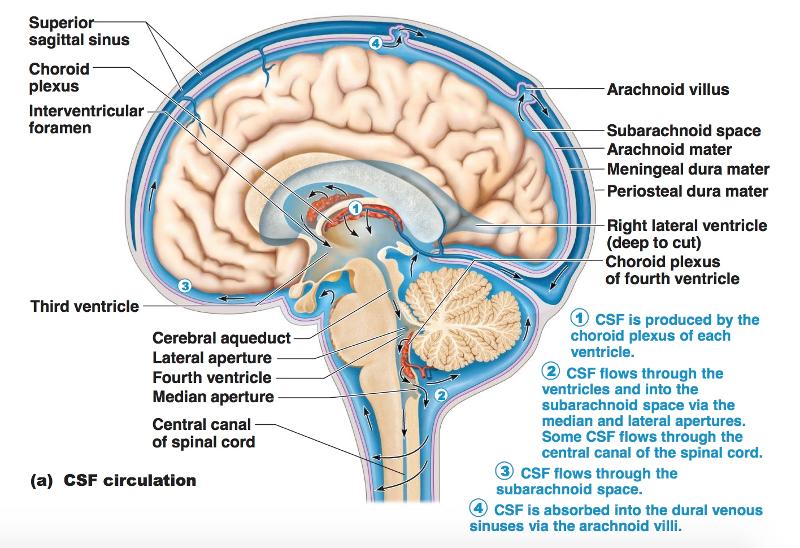
Chapter 12 The CNS (Brain and Spinal Cord) Flashcards Easy Notecards
The discovery of these openings in the 4 th ventricle, first described in the 19 th century by François Magendie and Hubert von Luschka, resulted from continued and tenacious research on the subject. 1 , 2 These openings aroused interest for their importance under normal conditions, and in several congenital or acquired pathological disorders.

Organization of the ventricular system of the brain. The brain
The ventricular system is comprised of four interconnected CSFfilled, ependymal-lined cavities that lie deep within the brain. The paired lateral ventricles communicate with the third ventricle via the Y-shaped foramen of Monro. The third ventricle communicates with the fourth ventricle via the cerebral aqueduct (of Sylvius).

PPT CSF and Ventricular System PowerPoint Presentation, free download
The foramen of Luschka and Magendie may be obstructed in a condition called Arnold-Chiari malformation where the cerebellar tonsils get displaced downward through the foramen magnum and can give rise to internal hydrocephalus. They can also be obstructed in the case of inflammatory fibrosis of the meninges leading to congenital hydrocephalus.

Obstruction of Magendie's Foramen MRI Sumer's Radiology Blog
The medial aperture of the fourth ventricle (foramen of Magendie), is situated immediately above the inferior angle of the ventricle. The lateral apertures (foramina of Luschka) are found at the extremities of the lateral recesses. By means of these three openings the ventricle communicates with the subarachnoid cavity, and the cerebrospinal.
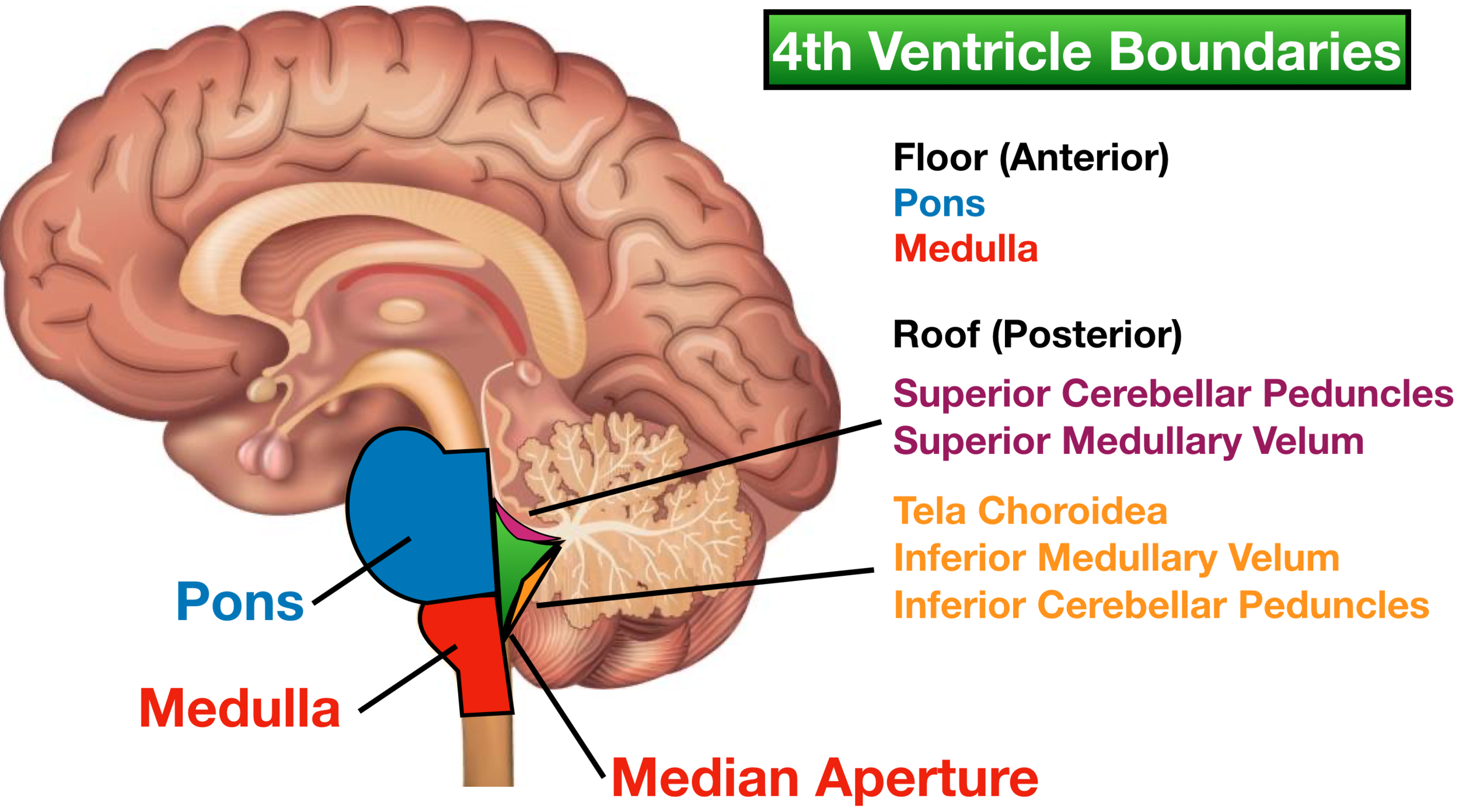
Ventricles of the Brain Labeled Anatomy, Function, CSF Flow
The Foramen of Magendie, a midline opening in the inferior medullary velum, is one of three openings (the other two are the paired lateral foramina of Luschke) that drain CSF from the IV ventricle into the foramen magnum. The posterior inferior cerebellar artery (PICA), seen prominently on the left side of the image, is a branch of the.
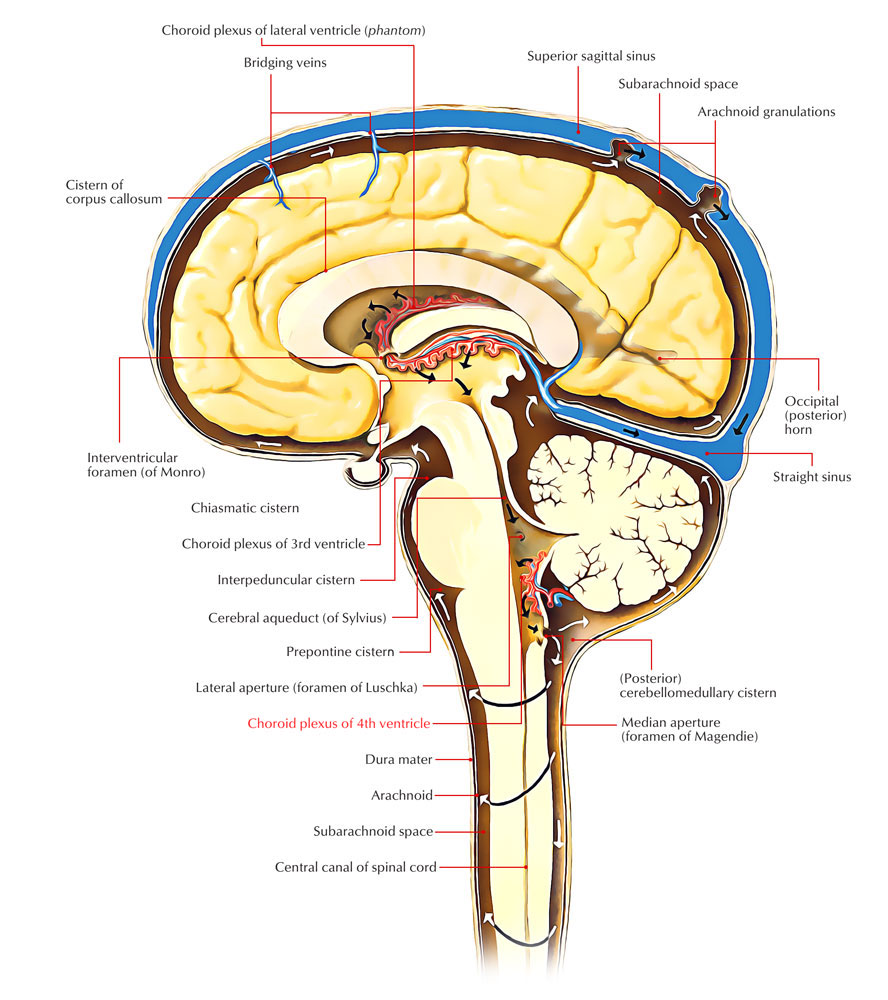
Choroid Plexus Earth's Lab
The lower part of the membrane has a large aperture, the foramen of Magendie. This is the median aperture of the fourth ventricle, through which the entire ventricular system communicates. [Ventricles of the brain]The lateral ventricles are two C-shaped cavities, one in each cerebral hemisphere. The interventricular foramen (or foramen of Monro.

VENTRICLES AND THE CEREBROSPINAL FLUID Neupsy Key
The foramen of Magendie, also known as median aperture, is one of the foramina in the ventricular system and links the fourth ventricle and the cisterna magna. It is one of the three sites that cerebrospinal fluid (CSF) can leave the fourth ventricle and enter the subarachnoid space. The two other openings of the fourth ventricle are termed the.

The cerebrospinal fluid passes out from the ventricle of medulla
Lateral apertures (foramina of Luschka), and a median aperture (foramen of Magendie) in the roof of the fourth ventricle facilitates the exiting flow of CSF. Cerebrospinal fluid circulation. While each ventricle produces CSF, it also receives CSF from the ventricle upstream.. (or foramen of Monro). At the junction of the anterior horn and.
What is the position of foramen of magendie, foramen magnum and luschka?
Median aperture (Magendie): fourth ventricle -> subarachnoid space Right & left lateral aperture (Luschka): fourth ventricle -> subarachnoid space: Clinical relations:. exits the fourth ventricle to either enter the central canal of the spinal cord or by the foramina of Luschka and foramen of Magendie to enter the cisterns.

Obstruction of Magendie's Foramen MRI Sumer's Radiology Blog
There are three openings that lead from the fourth ventricle into the cisterna magna: the midline foramen of Magendie lies at the caudal end of the fourth ventricle and the two laterally situated foramina of Luschka are found at approximately mid-pontine level. These laterally situated foramina often can be identified on the inferior aspect of.

Increased cerebrospinal fluid flow through the foramen of Magendie
The foramen of Magendie (aka median aperture) is a single midline structure within the ventricular system of the brain which connects the fourth ventricle with the cerebellopontine cistern. It represents one of the three pathways that enable CSF to connect with the subarachnoid space. It lies posterior to the pons and anterior to the cerebellum.

Obstruction of Magendie's Foramen MRI Sumer's Radiology Blog
The first part of the incision, which opens the tela choroidea, begins inferiorly near the foramen of Magendie in the lower portion of the ventricle roof and extends upward to the level of the junction of the tela with the inferior medullary velum (Fig. 6). After we opened the tela choroidea, the full length of the floor of the fourth ventricle.
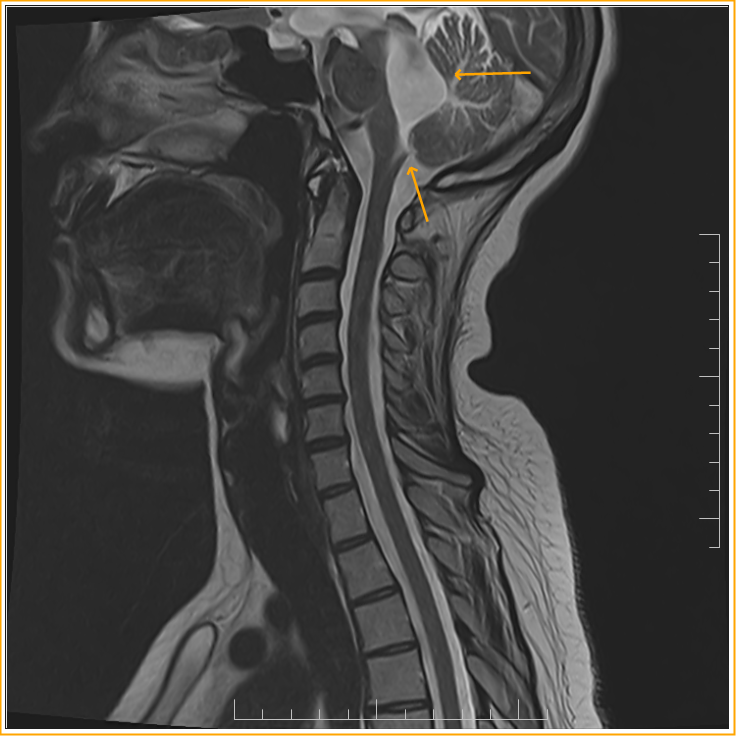
Obstruction of Magendie's Foramen MRI Sumer's Radiology Blog
The lateral apertures (of Luschka) (also known as the foramina of Luschka) are two of the foramina in the ventricular system and link the fourth ventricle to the cerebellopontine cistern. Together with the median aperture (of Magendie) they comprise two of the three sites that CSF can leave the fourth ventricle and enter the subarachnoid space.
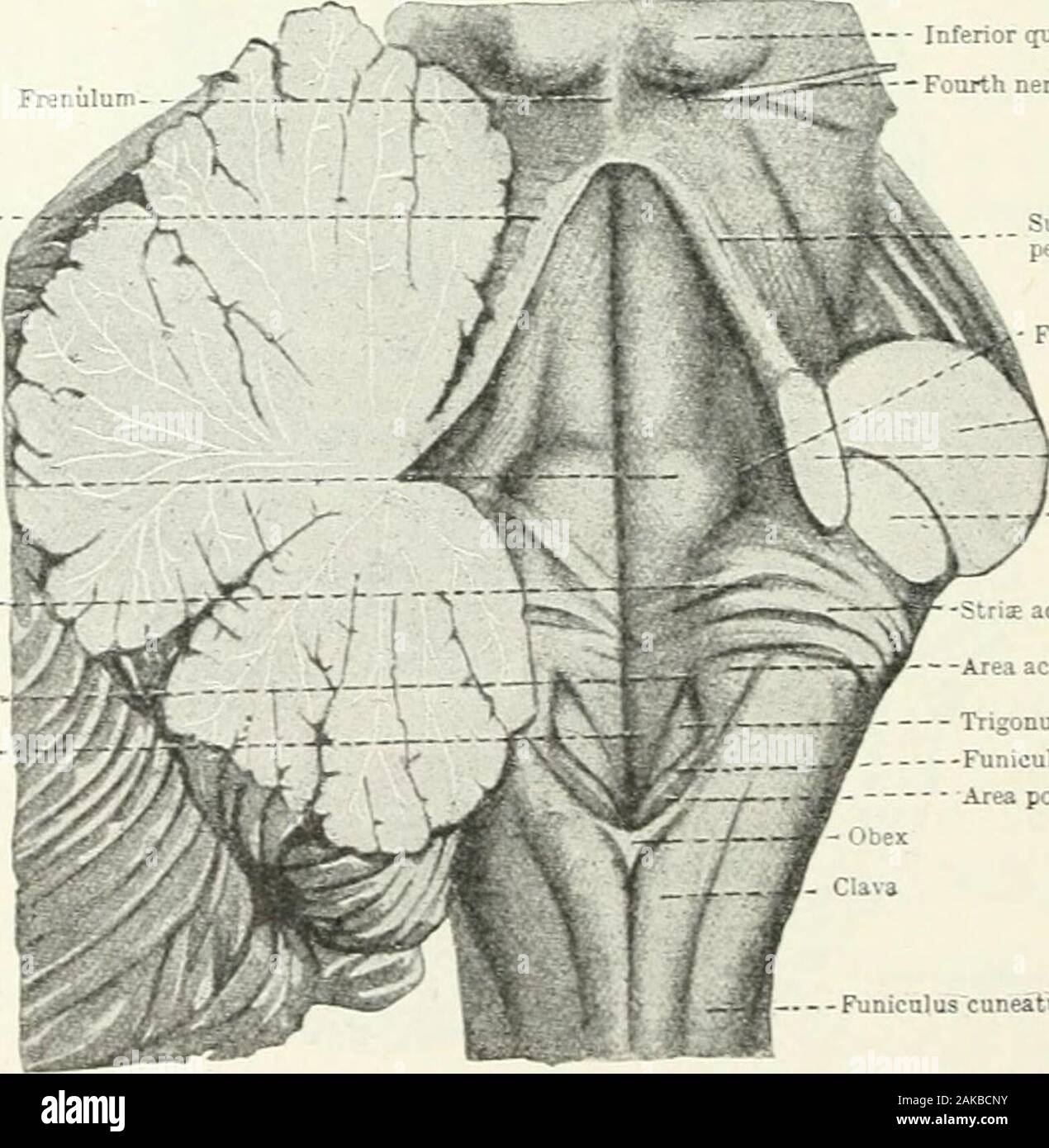
Foramen of magendie hires stock photography and images Alamy
The meaning of FORAMEN OF MAGENDIE is a passage through the midline of the roof of the fourth ventricle of the brain that gives passage to the cerebrospinal fluid from the ventricles to the subarachnoid space.
What is the position of foramen of magendie, foramen magnum and luschka?
The CSF finally leaves the fourth ventricle through the foramen of Magendie and the foramina of Luschka to reach the subarachnoid space surrounding the brain. Each lateral ventricle lies within a cerebral hemisphere. The lateral ventricle, when viewed from the lateral aspects of the brain,.
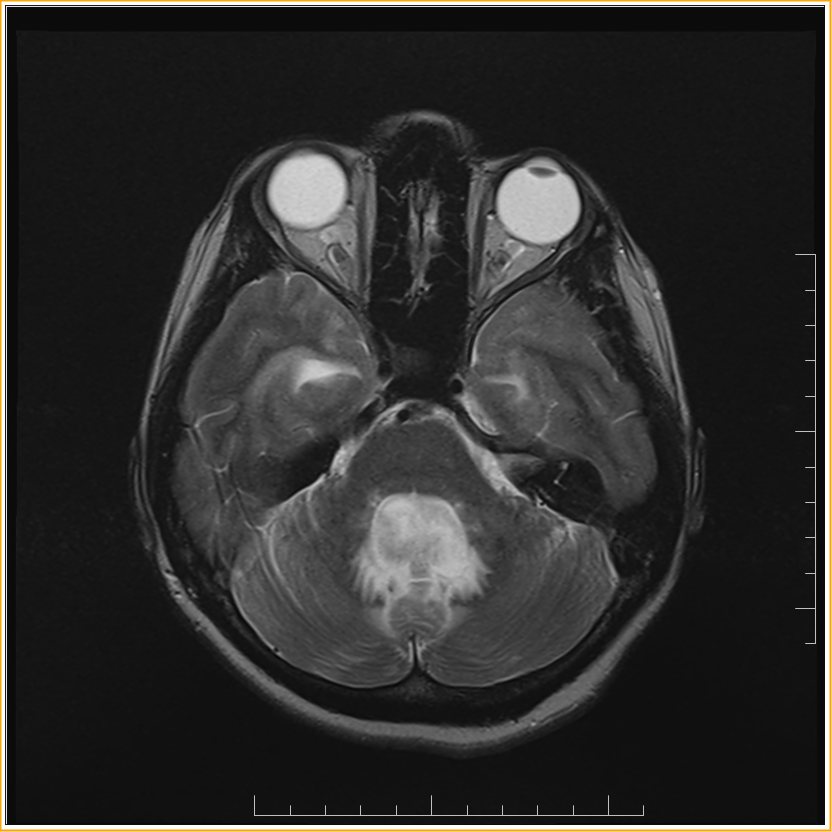
Obstruction of Magendie's Foramen MRI Sumer's Radiology Blog
The median aperture (also known as the medial aperture, and foramen of Magendie) is an opening of the fourth ventricle at the caudal portion of the roof of the fourth ventricle. [1] It allows flow of cerebrospinal fluid (CSF) from the fourth ventricle into the cisterna magna. [2] [3] The other two openings of the fourth ventricle are the.